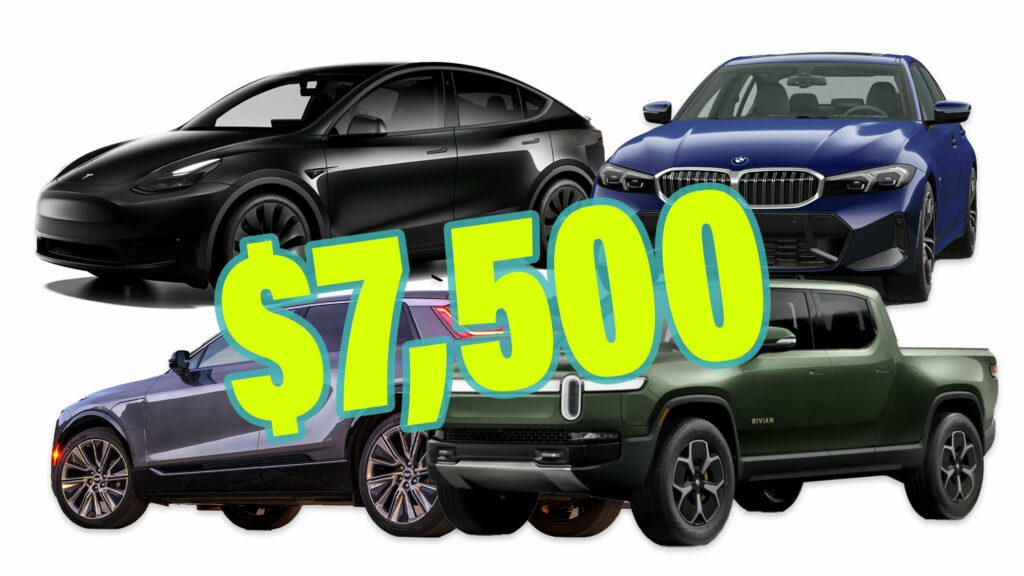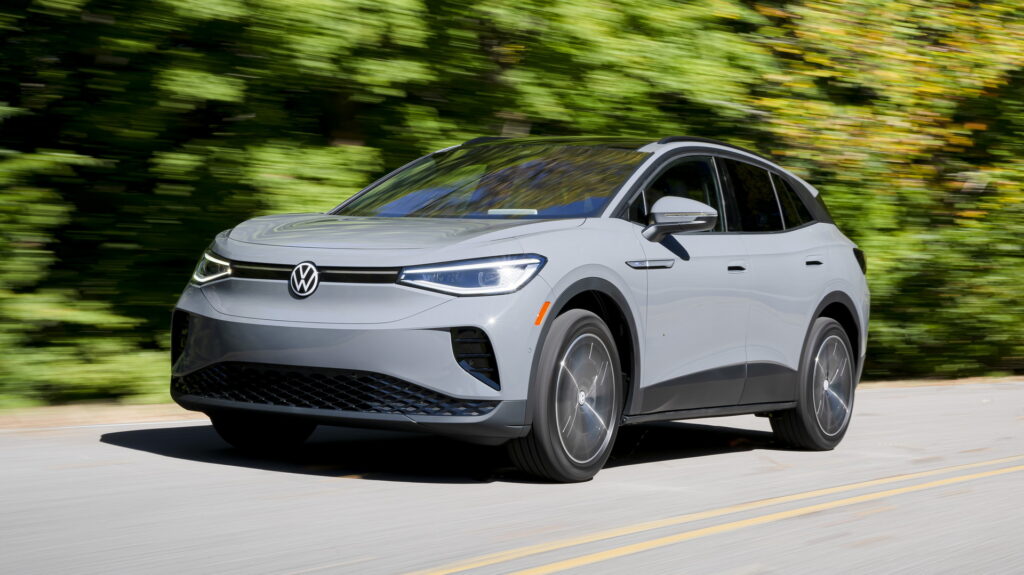<!—->
Even automakers find the IRS’s new EV incentives complicated, but it’ll all be okay
12 hours ago
 –>
–> 
by Sebastien Bell
–>
The Internal Revenue Service has released a preliminary list of electric vehicles that qualify for the U.S. federal government’s tax incentives for clean vehicles. Inconsistencies and oddities, though, were immediately noticed by readers that may disadvantage some automakers, such as Tesla.
The automaker’s CEO, Elon Musk, wrote on Twitter that the rules were “messed up” after user @farzyness, tweeted that the plug-in hybrid Jeep Wrangler 4xe does qualify for incentives, while the all-electric Model Y does not.
The difference comes down to how much the vehicles cost, and how it is classified. According to IRS.gov, “vans, sport utility vehicles and pickup trucks” must have a base MSRP of less than $80,000 to qualify for incentives, whereas “other vehicles” must have a base price of less than $55,000.
What the site does not make clear, though, is how the IRS classifies each individual vehicle. On the site, the Jeep Wrangler 4xe is considered an SUV, while the Model Y is considered “other.” More specifically, according to the IRS, the two-row, five-passenger Model Y is classified as a passenger car, while the three-row Model Y is considered an SUV, meaning that the former has a lower $55,000 MSRP limit and the latter, a higher one at $80,000.
Read: Tesla Delivered A Record 405,000 Vehicles In Q4 And 1.3 Million In 2022
Similar seeming inconsistencies can be found throughout the IRS’s list of vehicles. While Volkswagen’s RWD ID.4 is considered “other,” the AWD version satisfies requirements to be an off-road capable vehicle or SUV. And, although all Ford Mustang Mach-Es and Cadillac Lyriqs are considered the same type of vehicle, according to the IRS, they are not SUVs, and must therefore cost less than $55,000 to qualify for incentives – something the Ford does, but the Cadillac does not as it starts from $62,990.
Why is that? While many have posited that gross vehicle weight might have something to do with these classifications, they often do not. People familiar with the IRS’s reasoning told Carscoops that the service decided to use pre-existing definitions of vehicles found in Corporate Average Fuel Economy (CAFE) rules.
“[The] Treasury consulted with other federal agencies and did not create a new vehicle classification definition. The pre-existing definition in Treasury’s Notice of Intent references a longstanding regulation with objective standards under CAFE. Manufacturers already report this information to EPA, and the definition offers clear criteria for delineating between cars and SUVs. This reduces opportunities for potential gaming of the MSRP limits,” our source said.
More: Here’s Why Some Vehicles Qualify As SUVs And Some Don’t For The IRA EV Tax Credits

Thanks to CAFE’s complicated regulatory equations, though, just because a vehicle is listed as an SUV on, say, fueleconomy.gov, it is not necessarily considered an SUV by the IRS. Unsurprisingly, the rules are creating confusion, even among the automotive manufacturers we reached out to for this story, and they don’t all agree with the IRS’s reasoning, as Cadillac spokesperson Joe Singer told us.
“In determining how vehicles should be classified, Treasury should leverage existing U.S. government definitions and practices, using criteria and processes similar to that used by the Environmental Protection Agency (EPA) and the Department of Energy (DOE),” Singer wrote. “We are addressing these concerns with Treasury and hope that forthcoming guidance on vehicle classifications will provide the needed clarity to consumers and dealers, as well as regulators and manufacturers.”
The rules were not, however, pulled out of thin air, as it may seem to any person who doesn’t hold a doctorate in tax law. If you want to get into the nitty-gritty of why an extra row of seats magically turns a Model Y into an SUV, you can read a more in depth piece about that written by Carscoops’ editor-in-chief, John Halas.
For our purposes, though, suffice it to say that there are consistent reasons for the way vehicles are being categorized, they’re just buried very deep in government regulations. If you want to find out which vehicles qualify for the government’s new tax incentives, you can take a look at the list below. If the base price of a vehicle is lower than the MSRP limit, then it qualifies.
| QUALIFYING MODELS | ||
|---|---|---|
| Model Year | Vehicle | MSRP Limit |
| 2023 | Audi Q5 TFSI e Quattro (PHEV) | $80,000 |
| 2021, 2022, 2023 | BMW 330e | $55,000 |
| 2021, 2022, 2023 | BMW X5 xDrive45e | $80,000 |
| 2022, 2023 | Cadillac Lyriq | $55,000 |
| 2022, 2023 | Chevrolet Bolt | $55,000 |
| 2022, 2023 | Chevrolet Bolt EUV | $55,000 |
| 2022, 2023 | Chrysler Pacifica PHEV | $80,000 |
| 2022, 2023 | Ford E-Transit | $80,000 |
| 2022, 2023 | Ford Escape Plug-In Hybrid | $80,000 |
| 2022, 2023 | Ford F-150 Lightning | $80,000 |
| 2022, 2023 | Ford Mustang Mach-E | $55,000 |
| 2022, 2023 | Jeep Grand Cherokee 4xe | $80,000 |
| 2022, 2023 | Jeep Wrangler 4xe | $80,000 |
| 2022, 2023 | Lincoln Aviator Grand Touring | $80,000 |
| 2022, 2023 | Lincoln Corsair Grand Touring | $55,000 |
| 2021, 2022, 2023 | Nissan Leaf S | $55,000 |
| 2021, 2022 | Nissan Leaf S Plus | $55,000 |
| 2021, 2022 | NIssan Leaf SL Plus | $55,000 |
| 2021, 2022 | Nissan Leaf SV | $55,000 |
| 2021, 2022, 2023 | Nissan Leaf SV Plus | $55,000 |
| 2022, 2023 | Rivian R1S | $80,000 |
| 2022, 2023 | Rivian R1T | $80,000 |
| 2022, 2023 | Tesla Model 3 Long Range | $55,000 |
| 2022, 2023 | Tesla Model 3 Rear Wheel Drive | $55,000 |
| 2022, 2023 | Tesla Model Y AWD – 5 seat (2-rows) | $55,000 |
| 2022, 2023 | Tesla Model Y AWD – 7 seat (3-rows) | $80,000 |
| 2022, 2023 | Tesla Model Y Long Range – 5 seat (2-rows) | $55,000 |
| 2022, 2023 | Tesla Model Y Long Range – 7 seat (3-rows) | $80,000 |
| 2022, 2023 | Tesla Model Y Performance – 5 seat (2-rows) | $55,000 |
| 2022, 2023 | Tesla Model Y Performance – 7 seat (3-rows) | $80,000 |
| 2023 | Volkswagen ID.4 | $55,000 |
| 2023 | Volkswagen ID.4 AWD Pro | $80,000 |
| 2023 | Volkswagen ID.4 AWD Pro S | $80,000 |
| 2023 | Volkswagen ID.4 Pro | $55,000 |
| 2023 | Volkswagen ID.4 Pro S | $55,000 |
| 2023 | Volkswagen ID.4 S | $55,000 |
| 2022 | Volvo S60 (PHEV) | $55,000 |
| 2022 | Volvo S60 Extended Range | $55,000 |
| 2023 | Volvo S60 T8 Recharge (Extended Range) | $55,000 |
 –>
–> 
